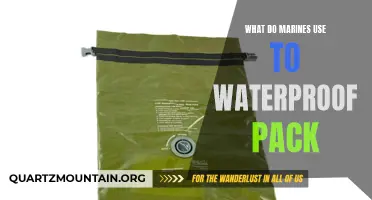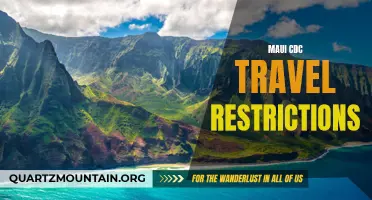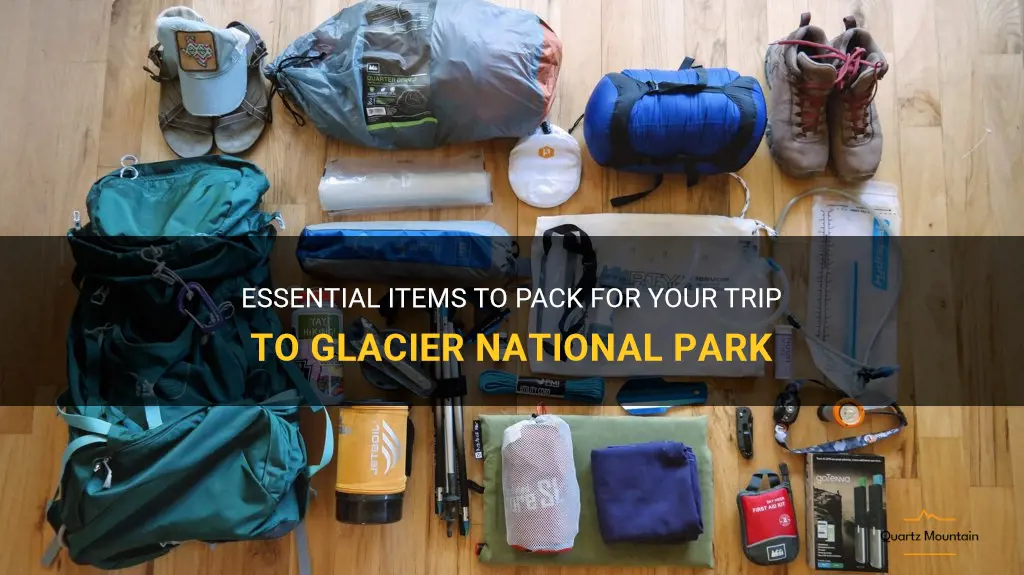
Are you planning a trip to Glacier National Park? As one of the most breathtaking and pristine natural landscapes in the United States, this national park offers a multitude of outdoor adventures and stunning scenery. But before you embark on your journey, it's essential to pack the right items to ensure a safe and enjoyable experience. In this guide, we will highlight the essential items you should pack for your trip to Glacier National Park, ensuring you are well-prepared for the wilderness that awaits you.
| Characteristics | Values |
|---|---|
| Climate | Cold and variable |
| Terrain | Mountains, glaciers, forests |
| Hiking trails | Numerous and diverse |
| Wildlife | Bears, moose, mountain goats, etc. |
| Camping options | Various campgrounds and backcountry sites |
| Water sources | Lakes, rivers, and streams |
| Park regulations | Leave no trace, bear safety, backcountry permits |
| Clothing | Layered clothing, waterproof and warm gear |
| Footwear | Sturdy hiking boots, crampons for icy conditions |
| Equipment | Backpack, trekking poles, navigation tools |
| Food and water | Lightweight camping meals, water filtration system |
| First aid kit | Essential medical supplies and medications |
| Communication | Cell reception limited, emergency communication device |
| Wildlife safety | Bear spray, bear-resistant food storage |
| Photography opportunities | Stunning landscapes, wildlife, and wildflowers |
| Visitor services | Visitor centers, guided tours, shuttle services |
What You'll Learn
- What are the essential items to pack for a trip to Glacier National Park?
- Are there any specific clothing recommendations for visiting Glacier National Park?
- What gear should I bring for hiking and exploring the trails in Glacier National Park?
- Are there any specific items or supplies that are prohibited in Glacier National Park?
- Are there any seasonal considerations when packing for a trip to Glacier National Park?

What are the essential items to pack for a trip to Glacier National Park?
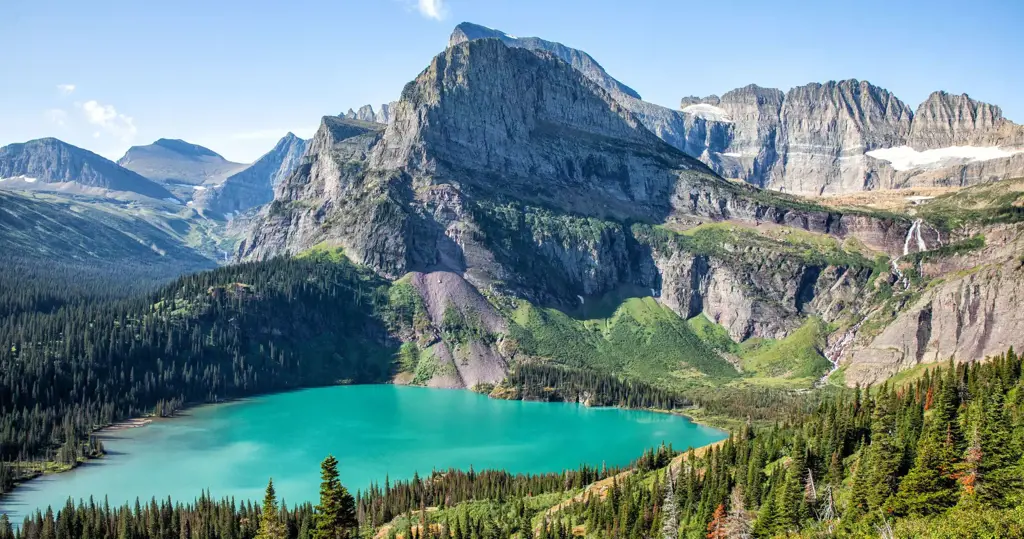
Glacier National Park is a breathtaking destination known for its pristine wilderness, rugged mountains, and abundant wildlife. Whether you're planning a day trip or a multi-day adventure, it's important to pack the right gear to ensure a safe and enjoyable experience. In this article, we'll discuss some of the essential items you should bring when visiting Glacier National Park.
- Clothing: The weather in Glacier National Park can be unpredictable, so it's crucial to pack layers and be prepared for various conditions. Start with a moisture-wicking base layer to keep you dry and comfortable. A fleece or down jacket can provide warmth in colder temperatures, while a waterproof and windproof outer layer will protect you from the elements. Don't forget to bring a hat, gloves, and sturdy hiking boots to keep you comfortable on the trails.
- Navigation tools: Glacier National Park offers a vast network of trails, and it's easy to get lost if you're not familiar with the area. A detailed map and compass are essential for navigation. Additionally, consider bringing a GPS device or a smartphone with a reliable GPS app to track your location and ensure you stay on the right path.
- Backpack: A sturdy backpack is a must-have item for any trip to Glacier National Park. Look for one with a comfortable harness system and plenty of compartments to organize your gear. Make sure it's large enough to carry all your essentials, such as water bottles, snacks, extra layers, and a first aid kit.
- Water and food: Staying hydrated is crucial when exploring Glacier National Park. Bring plenty of water or a water filtration system to refill your bottles along the way. Pack enough high-energy snacks and meals to keep you fueled throughout your adventures. Opt for non-perishable items like energy bars, dried fruit, and nuts that won't spoil easily.
- First aid kit: Accidents can happen, even in the most remote areas. A well-stocked first aid kit can help you handle minor injuries and provide immediate relief until you can seek professional medical help. Include essentials like bandages, adhesive tape, antiseptic wipes, painkillers, and any prescription medications you may need.
- Bear spray: Glacier National Park is home to grizzly bears and black bears, so it's crucial to be prepared for encounters with wildlife. Bear spray is a highly effective deterrent that can be used to deter a charging bear. Familiarize yourself with how to use it before your trip and keep it easily accessible in a holster or a side pocket of your backpack.
- Sun protection: The sun's rays can be intense in Glacier National Park, especially at higher elevations. Protect your skin by wearing sunscreen with a high SPF, sunglasses with UV protection, and a wide-brimmed hat. Consider bringing a lightweight, long-sleeved shirt and pants to protect yourself from sunburn and bug bites.
- Camping gear (if applicable): If you're planning to camp in Glacier National Park, make sure to pack the necessary gear. This may include a tent, sleeping bag, sleeping pad, cooking equipment, and camping stove. Familiarize yourself with the park's camping regulations and make a reservation if required.
In conclusion, packing the right gear is crucial for a safe and enjoyable trip to Glacier National Park. By bringing essential items such as clothing layers, navigation tools, a backpack, water and food, a first aid kit, bear spray, sun protection, and camping gear if necessary, you'll be well-prepared to explore the park's natural wonders and make lasting memories. Remember to always check the park's regulations and guidelines before your trip and practice Leave No Trace principles to minimize your impact on the environment. Happy travels!
Common Mistakes to Avoid When Packing Your Hospital Bag
You may want to see also

Are there any specific clothing recommendations for visiting Glacier National Park?
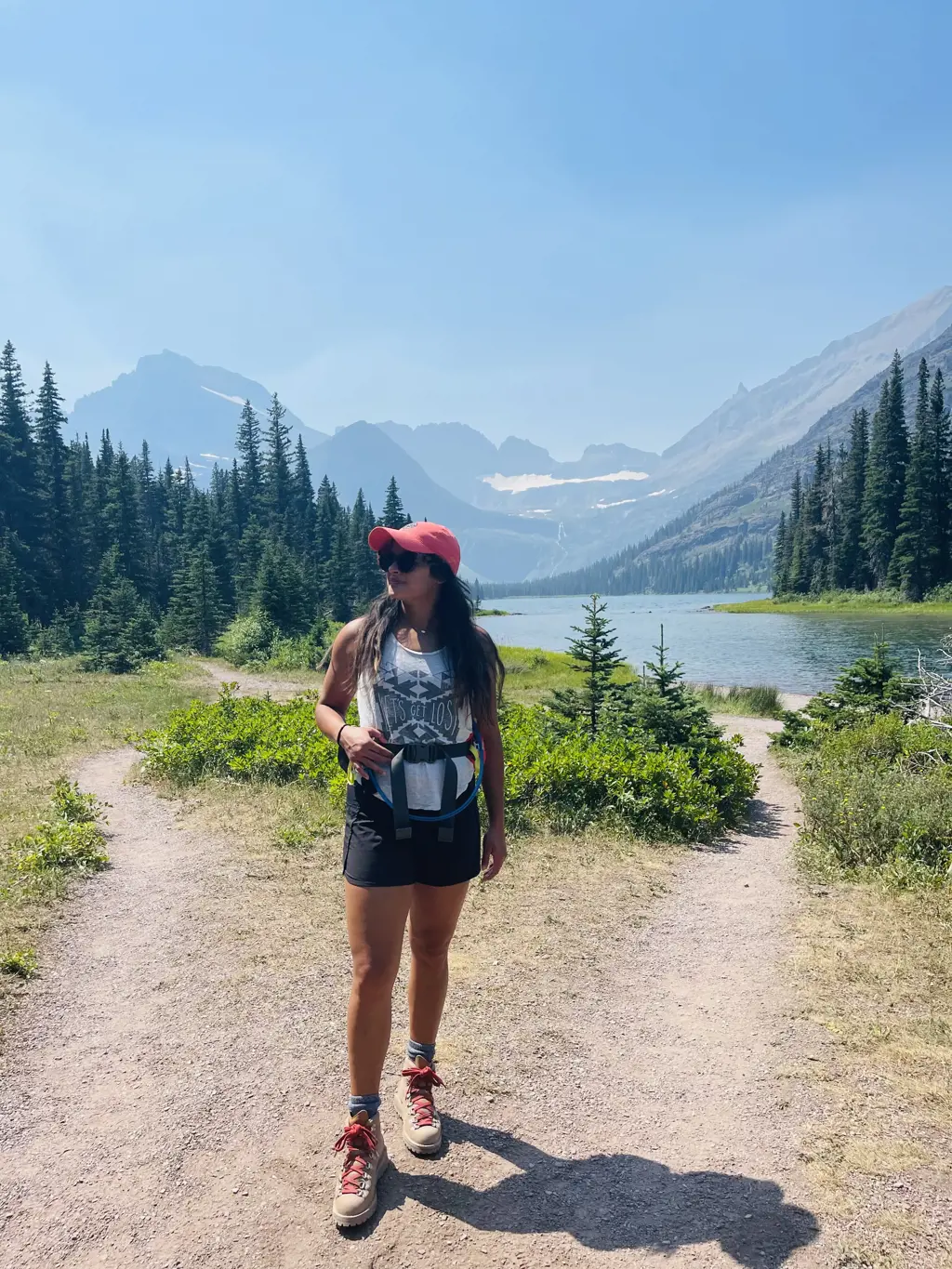
When planning a visit to Glacier National Park, it is important to consider the climate and weather conditions of the area. The park is known for its diverse ecosystems and can experience rapidly changing weather, so it is essential to be properly prepared with appropriate clothing. Here are some specific clothing recommendations to ensure a comfortable and enjoyable visit to Glacier National Park.
Layers: Layering is key when it comes to dressing for Glacier National Park. The park's weather can vary greatly throughout the day, so it is important to be able to adjust your clothing accordingly. Start with a moisture-wicking base layer, such as a thermal or synthetic shirt, to keep you dry and comfortable. Over this, add a warm mid-layer, such as a fleece or down jacket, to provide insulation. Finally, top it off with a waterproof and breathable outer layer, such as a rain jacket, to protect you from wind and precipitation.
Insulated Jacket: Glacier National Park can experience cool temperatures even during the summer months. Bringing along an insulated jacket is essential for staying warm, especially during the early mornings and evenings when temperatures can drop significantly. Opt for a lightweight and packable jacket that you can easily carry in your backpack when not in use.
Hiking Pants: When it comes to choosing pants for hiking and exploring Glacier National Park, opt for comfortable and durable options. Look for pants made from lightweight and breathable materials that provide freedom of movement. Convertible pants that can be zipped off into shorts are a great option, as they allow for easy adjustment to changing temperatures throughout the day.
Hiking Boots: One of the highlights of visiting Glacier National Park is exploring its vast network of trails. To ensure a comfortable and safe hiking experience, invest in a good pair of hiking boots. Look for boots that provide ankle support, have a sturdy sole for traction, and are waterproof to keep your feet dry during river crossings or wet conditions.
Hat and Sunglasses: Glacier National Park is known for its breathtaking landscapes and stunning vistas. However, it is also important to protect yourself from the sun's harmful rays. Bring along a wide-brimmed hat to shield your face and neck from the sun, as well as a pair of sunglasses with UV protection to protect your eyes.
Gloves and Warm Accessories: Depending on the time of year, Glacier National Park can experience cold temperatures, especially at higher elevations. Be sure to pack a pair of gloves, a warm hat, and a scarf or neck gaiter to keep you warm on chilly days.
Proper clothing is essential for a comfortable and enjoyable visit to Glacier National Park. By layering your clothing, bringing along a versatile jacket, wearing comfortable hiking pants and boots, and protecting yourself from the sun, you can ensure that you are prepared for any weather conditions that may arise during your visit. So, pack accordingly and get ready to explore the stunning beauty of Glacier National Park.
Essential Toiletry Bag Packing List for Your Travel Needs
You may want to see also

What gear should I bring for hiking and exploring the trails in Glacier National Park?
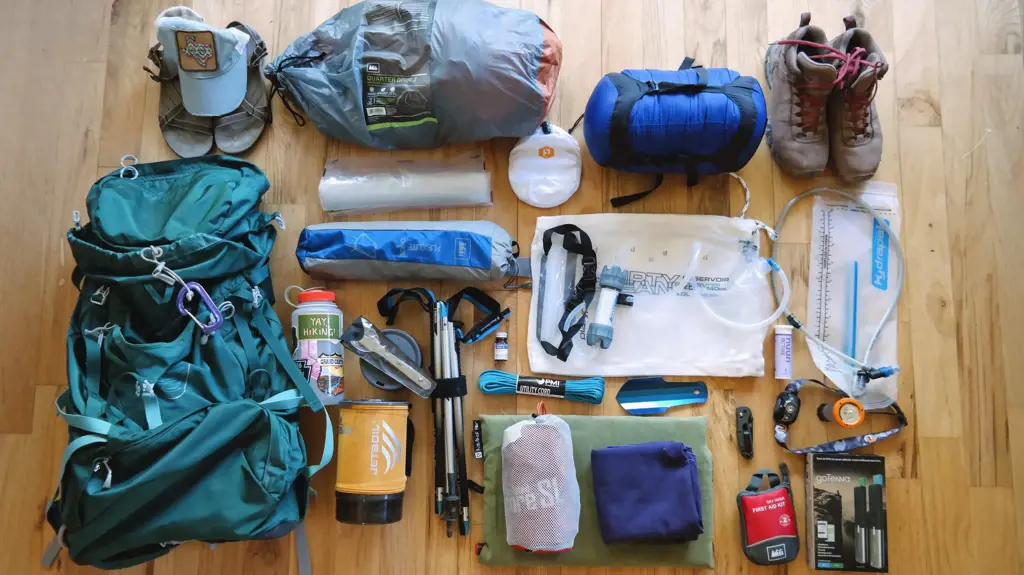
Glacier National Park is a vast and beautiful wilderness area located in Montana, known for its stunning landscapes and diverse wildlife. If you are planning to hike and explore the trails in Glacier National Park, it is important to come prepared with the right gear to ensure your safety and comfort. Here are some essential items you should consider bringing with you:
- Hiking boots: A good pair of hiking boots is essential for navigating the rugged and sometimes challenging terrain in Glacier National Park. Look for boots that provide ankle support and have a sturdy sole for added traction.
- Backpack: A reliable backpack is necessary for carrying all of your essential gear, including water, food, extra clothing layers, and any other personal items you may need on the trail. Look for a backpack with multiple compartments and adjustable straps for a comfortable fit.
- Water bottle: Staying hydrated is crucial when hiking in Glacier National Park, especially in the summer months when temperatures can be high. Invest in a durable water bottle that can hold enough water for the duration of your hike.
- Map and compass: While many of the trails in Glacier National Park are well-marked, it is still important to carry a map and compass as a backup. These tools can help you navigate in case you lose your way or encounter unexpected changes in the trail conditions.
- First aid kit: Accidents can happen, even on well-maintained trails. It is always a good idea to carry a basic first aid kit with you, including bandages, antiseptic ointment, pain relievers, and any necessary personal medications.
- Extra clothing layers: The weather in Glacier National Park can be unpredictable, so it is important to be prepared for changing conditions. Pack an extra layer of clothing, such as a lightweight jacket or fleece, in case the temperature drops or the weather turns inclement.
- Sun protection: The sun can be intense at higher elevations, so be sure to bring sunscreen, sunglasses, and a hat to protect your skin and eyes. Additionally, consider packing insect repellent to ward off any pesky mosquitoes or other biting insects.
- Snacks and food: It is important to bring enough food to fuel your hike, especially if you plan on spending several hours on the trails. Pack a variety of lightweight snacks that provide a good balance of carbohydrates, protein, and fats to keep your energy levels up.
- Trekking poles: If you anticipate encountering steep or uneven terrain, consider bringing trekking poles to provide extra stability and support. Trekking poles can also help alleviate stress on your knees and other joints during long hikes.
- Emergency whistle and flashlight: In case of an emergency or getting lost, it is useful to have an emergency whistle to attract attention and a flashlight to provide visibility, especially if you find yourself hiking in the dark.
Remember, it is essential to do your research and plan your hikes in advance, taking into account factors such as trail length, difficulty level, and weather conditions. By being prepared and having the right gear, you can fully enjoy the beauty and adventure of Glacier National Park while staying safe and comfortable on the trails.
Essential Items to Pack for a Memorable Zoo Trip
You may want to see also

Are there any specific items or supplies that are prohibited in Glacier National Park?
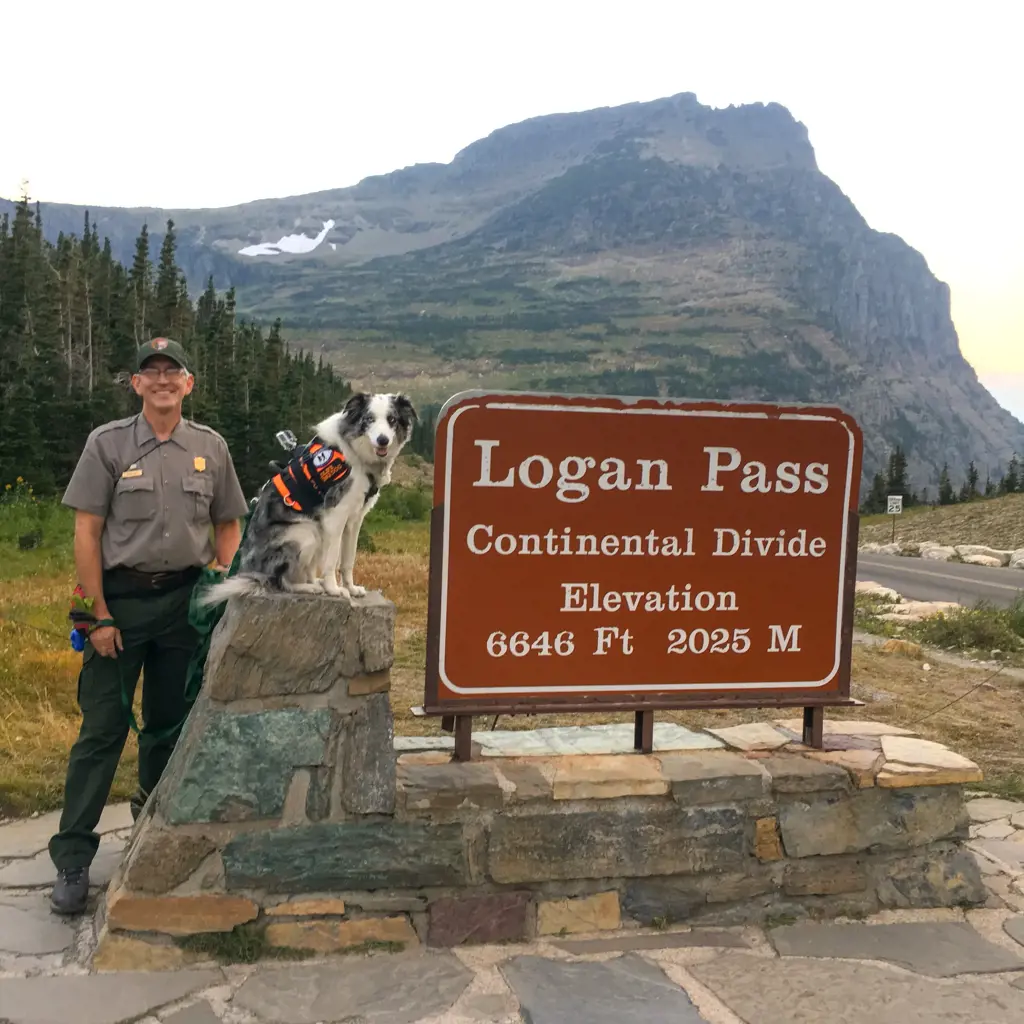
When planning a trip to Glacier National Park, it is important to be aware of the specific items or supplies that are prohibited within the park. These regulations are in place to protect the natural environment, wildlife, and other visitors to the park. By understanding and adhering to these rules, we can all help preserve the wonders of this beautiful landscape.
- Weapons and Firearms: The possession, use, or discharge of firearms or other weapons is strictly prohibited within Glacier National Park. This includes any kind of firearm, stun gun, bow and arrow, or any other weapon that could potentially harm wildlife or other people. The park aims to maintain a safe and peaceful environment for everyone to enjoy.
- Illegal Drugs: The use or possession of illegal drugs is also strictly prohibited within the park. This includes any substances classified as illegal by federal law. Glacier National Park is committed to maintaining a drug-free environment for visitors to ensure their safety and the integrity of the park.
- Fireworks: The use or possession of fireworks is strictly prohibited within Glacier National Park. Fireworks not only pose a risk of fire but also cause disturbances to wildlife and other visitors. The park strives to provide a tranquil and undisturbed experience for everyone, and the use of fireworks goes against this goal.
- Drones: The use of drones is prohibited within Glacier National Park. Drones can be disruptive to wildlife, create noise pollution, and disrupt the peaceful atmosphere of the park. Moreover, the Federal Aviation Administration (FAA) has specific rules and regulations regarding the use of drones in national parks, and it is important to abide by these rules to ensure the safety of all visitors.
- Mountain Bikes: While Glacier National Park has many trails that are perfect for mountain biking, there are certain areas where biking is not allowed. In designated areas, biking is allowed only on established roads and trails. It is crucial to check the park’s regulations and maps to ensure you are biking in areas that are permitted.
- Collecting Natural Resources: Collecting or damaging natural resources, including rocks, plants, or artifacts, is strictly prohibited within the park. The preservation of the park’s natural environment is paramount, and it is essential to leave everything as you found it for the enjoyment of future visitors.
- Feeding Wildlife: Feeding or approaching wildlife within Glacier National Park is not only prohibited but also dangerous. Wildlife should be admired from a safe distance to protect their well-being and ensure the safety of visitors. Feeding wildlife can also have negative effects, such as habituation and dependence on humans for food.
It is crucial to familiarize yourself with these regulations and guidelines before visiting Glacier National Park. By respecting the rules and making responsible choices, we can all contribute to the preservation of this unique and breathtaking natural wonder for generations to come. Let us enjoy the park's beauty while leaving no trace behind.
Pack Smart: The Ultimate Guide for 14 Days in Italy
You may want to see also

Are there any seasonal considerations when packing for a trip to Glacier National Park?
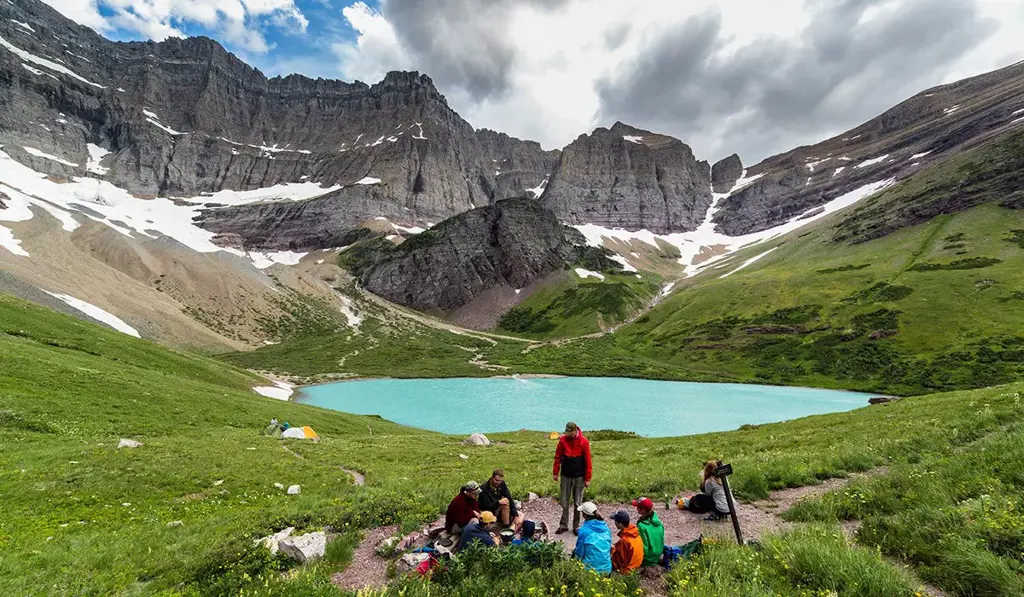
When planning a trip to Glacier National Park, it is important to take into account the seasonal variations that occur throughout the year. The park's location in Montana, near the Canadian border, results in a wide range of weather conditions and a diverse range of activities to enjoy.
During the winter months, from December to February, Glacier National Park is transformed into a winter wonderland. The park receives an average of 100 inches of snowfall, making it a popular destination for skiing, snowboarding, and snowshoeing. It is essential to pack warm, waterproof clothing, including insulated jackets, gloves, hats, and boots, to stay comfortable during outdoor activities. Additionally, it is advisable to bring sunglasses and sunscreen, as the reflection of the sun off the snow can be intense.
As spring arrives in March, the snow begins to melt, and temperatures gradually rise. This transitional period can be unpredictable, with varying weather conditions from mild to cold. It is ideal to bring layers of clothing, including light jackets, sweaters, and long-sleeved shirts, to accommodate for changing temperatures. Hiking boots or sturdy shoes are recommended for exploring the park's trails, which may still have some snow or muddy patches. It is also essential to pack a rain jacket or poncho, as spring showers are common.
Summertime, from June to August, is the peak season at Glacier National Park. The weather is generally mild and pleasant, with temperatures ranging from the 60s to 80s Fahrenheit. It is advisable to pack a variety of clothing options, including t-shirts, shorts, light pants, and a light jacket or sweater for cooler evenings. Hiking boots or comfortable sneakers are essential for exploring the park's trails, and don't forget to pack a hat, sunglasses, and sunscreen to protect against the sun's rays. It is worth noting that the park can be crowded during this time, so planning and booking accommodations and activities in advance is recommended.
In the fall, from September to November, Glacier National Park experiences cooler temperatures and changing foliage colors. The weather can be quite unpredictable during this time, so it is advisable to pack layers of clothing, including long-sleeved shirts, sweaters, pants, and a warm jacket. Hiking boots or sturdy shoes are necessary, as trails might be muddy or covered with fallen leaves. It is also a good idea to bring rain gear, as the park tends to receive more rainfall in the fall.
No matter the season, it is important to come prepared for any outdoor adventure in Glacier National Park. Packing the right clothing and equipment will ensure a comfortable and enjoyable experience. Consider the weather forecasts and specific activities planned to determine what items are necessary. By planning ahead and packing appropriately, visitors can make the most out of their trip to this magnificent national park.
Essential Items to Pack for a Trip to San Francisco
You may want to see also
Frequently asked questions
Some essential items to pack for Glacier National Park include appropriate hiking shoes, layers of clothing for changing weather, a waterproof jacket, a hat, sunglasses, sunscreen, insect repellent, a backpack, plenty of water, snacks, a map, a compass, a flashlight, and a first-aid kit.
It is recommended to pack layers of clothing for Glacier National Park, as the weather can change rapidly. This typically includes a moisture-wicking base layer, a warm mid-layer, and a waterproof and breathable outer layer. Additionally, pack a hat to protect from the sun, sunglasses, and extra socks.
Yes, you can bring your own food to Glacier National Park. It is advisable to pack non-perishable snacks and meals that are easy to carry and require no cooking. Bear-resistant food storage containers are available at the park and are recommended for storing any food items to prevent attracting bears.
Other items to consider packing for Glacier National Park include a camera, binoculars for wildlife viewing, a whistle for emergencies, a multi-tool or Swiss Army knife, a water filtration system or purification tablets, extra batteries for electronic devices, camping gear if you plan to camp, and a bear spray for safety in bear country.


